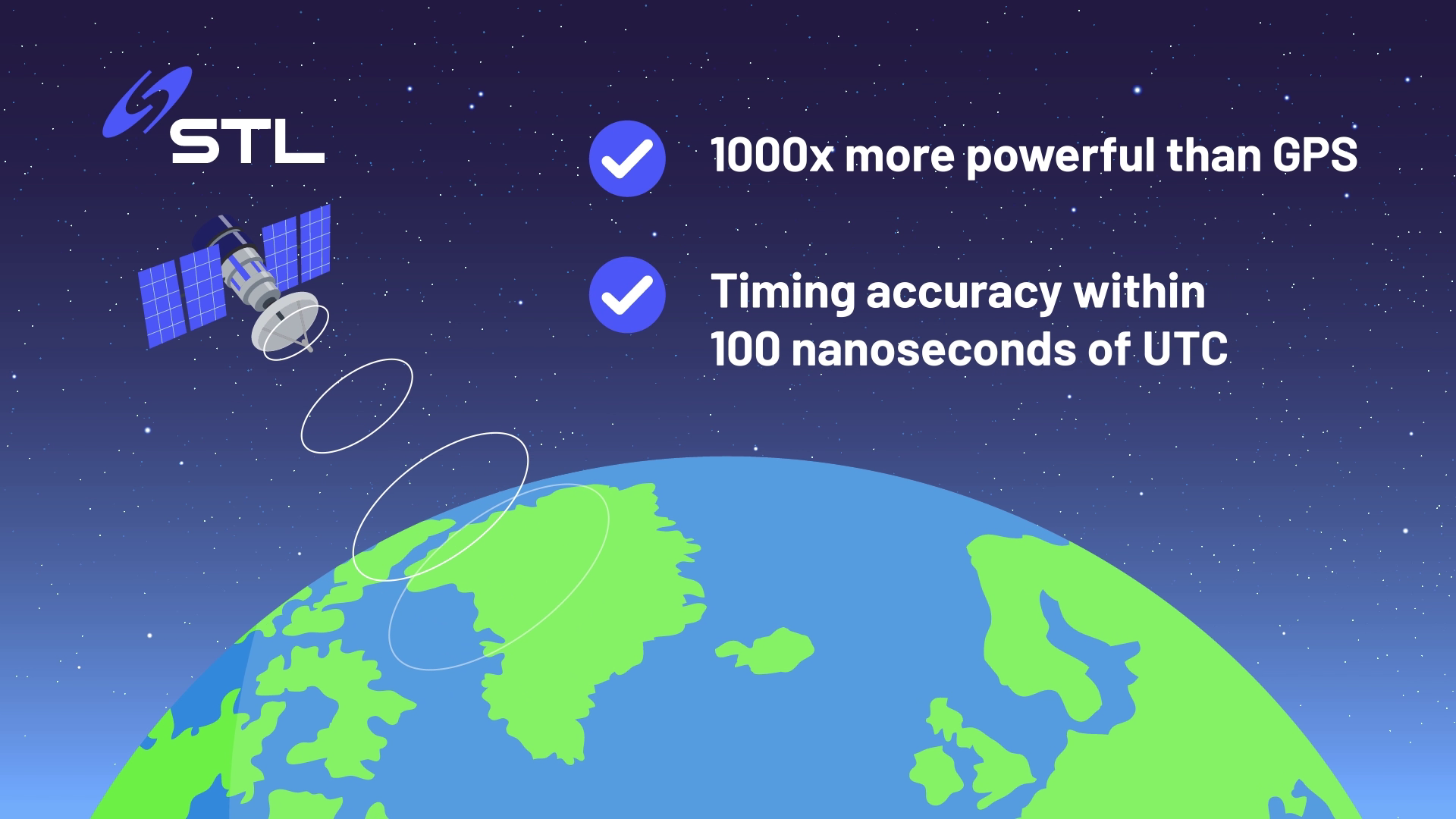5G Timing Synchronization
STL (Satellite Time and Location) gives you precise timing synchronization and indoor coverage in areas where GPS doesn't reach.

STL (Satellite Time and Location)
A Reliable Alternative for 5G Timing Synchronization
Wireless communications networks rely on accurate timing and synchronization from GPS/GNSS signals to function properly. The inability to receive GPS inside buildings — or the loss of signal to disruption, manipulation, or equipment failure — has been known to disable critical equipment, including macrocells and small cells.
STL (Satellite Time and Location) from Satelles provides the timing synchronization needed by 5G networks and IoT devices. It can serve as a standalone timing source or a backup to GPS/GNSS.
STL signals are 1000X stronger than GPS, allowing them to penetrate inside buildings and other hard-to-reach areas. The service is also easy and cost-effective to configure—requiring only a receiver and a small indoor antenna.
The best part? STL is available now.
Speak with an STL ExpertPrecise Timing at Any Location
STL is the only low Earth orbit (LEO) source of positioning, navigation, and timing (PNT) commercially available. Wireless carriers use STL to get reliable timing synchronization for sites where GPS/GNSS doesn't reach—even indoors.
Since the STL constellation is just 485 miles from Earth, its signals provide service in areas where GPS/GNSS doesn’t reach or isn’t available, such as indoors.
STL is a Stratum 0 UTC source of time and is used to create a Stratum 1 timing clock compliant with the ITU-T G.8272 PRTC-A performance standard.
The complex, overlapping beam patterns of the satellites combined with signal authentication techniques allow Satelles to deliver a trusted time and location capability that is highly secure and thwarts disruption or manipulation.
Customers use STL either as a primary source of PNT — for example, 5G deployments where GPS/GNSS is unavailable indoors or when distributed PTP cannot meet needed accuracies — or as an essential contingency capability to protect the operations of PNT-dependent systems and ensure survivability and resilience.
STL offers the advantage of utilizing a small indoor antenna to deliver timing signals that penetrate most structures, including buildings with low-emissivity (Low-E) windows or metal and concrete siding and roofing. This means that in-building wireless installations that leverage STL can maintain synchronous timing without the need for an outdoor GNSS antenna.
STL antennas can also be installed outdoors similar to GPS/GNSS antennas.
GPS is a source of timing, and PTP is used to distribute that timing to locations that can’t get GPS. STL can be that source of time in areas where GPS doesn’t reach, or as a backup in the case of GPS disruption.
With 5G networks, PTP doesn’t always meet the needed accuracy to get to certain locations because of too much accumulated timing error (loss). This is caused by too many switch and router hops – this is very common especially when the fiber is not owned by the service provider. STL provides the timing source closer to the desired location to mitigate these issues.
Using STL, a PTP EdgeMaster can enable 5G to work deep indoors. Standalone receivers that connect to a wireless operator’s RAN gear or router to replace or augment GPS allow STL to provide timing sync whenever and wherever GPS is unavailable.
Use of the L-band frequency plus strength of signal means STL can take advantage of small form factor antenna and receiver size, making it a low-cost alternative or backup to GPS/GNSS.
Satelles works with solution providers and original equipment manufacturers (OEMs) that engineer user equipment (UE) incorporating STL technology.
Expert Findings
Government authorities in the U.S. and Europe—including The U.S. National Institute of Standards and Technology (NIST), the U.S. Department of Homeland Security (DHS), and the U.S. Department of Transportation (DOT)—have tested STL. They confirmed that STL meets 5G timing accuracy specifications, provides signals indoors, and offers resilience in the event of a GPS/GNSS outage. See our expert findings.
Discover How STL Can Improve Your 5G Network’s Resiliency
Explore how STL can help you meet your 5G timing synchronization requirements when GPS is not available.
